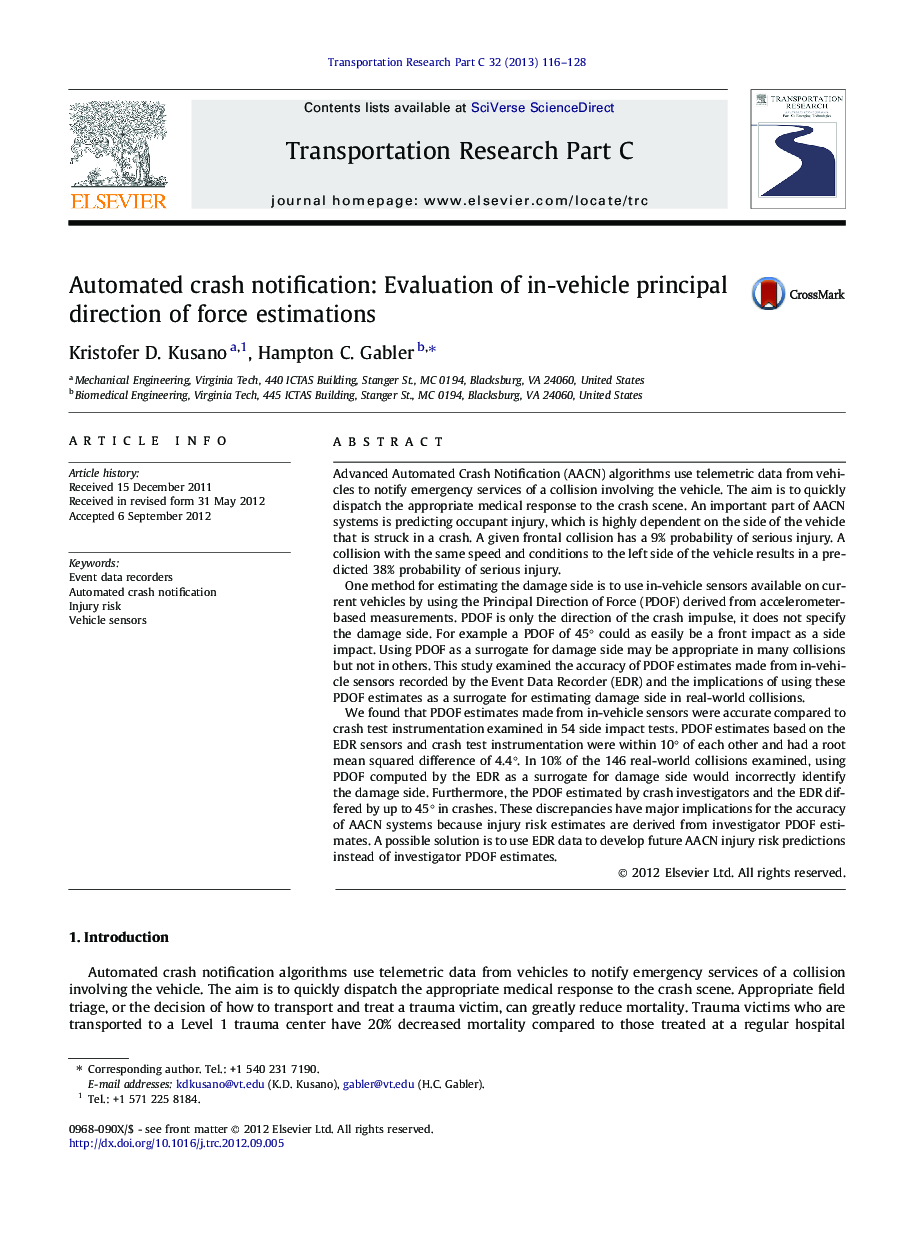| Article ID | Journal | Published Year | Pages | File Type |
|---|---|---|---|---|
| 524953 | Transportation Research Part C: Emerging Technologies | 2013 | 13 Pages |
Advanced Automated Crash Notification (AACN) algorithms use telemetric data from vehicles to notify emergency services of a collision involving the vehicle. The aim is to quickly dispatch the appropriate medical response to the crash scene. An important part of AACN systems is predicting occupant injury, which is highly dependent on the side of the vehicle that is struck in a crash. A given frontal collision has a 9% probability of serious injury. A collision with the same speed and conditions to the left side of the vehicle results in a predicted 38% probability of serious injury.One method for estimating the damage side is to use in-vehicle sensors available on current vehicles by using the Principal Direction of Force (PDOF) derived from accelerometer-based measurements. PDOF is only the direction of the crash impulse, it does not specify the damage side. For example a PDOF of 45° could as easily be a front impact as a side impact. Using PDOF as a surrogate for damage side may be appropriate in many collisions but not in others. This study examined the accuracy of PDOF estimates made from in-vehicle sensors recorded by the Event Data Recorder (EDR) and the implications of using these PDOF estimates as a surrogate for estimating damage side in real-world collisions.We found that PDOF estimates made from in-vehicle sensors were accurate compared to crash test instrumentation examined in 54 side impact tests. PDOF estimates based on the EDR sensors and crash test instrumentation were within 10° of each other and had a root mean squared difference of 4.4°. In 10% of the 146 real-world collisions examined, using PDOF computed by the EDR as a surrogate for damage side would incorrectly identify the damage side. Furthermore, the PDOF estimated by crash investigators and the EDR differed by up to 45° in crashes. These discrepancies have major implications for the accuracy of AACN systems because injury risk estimates are derived from investigator PDOF estimates. A possible solution is to use EDR data to develop future AACN injury risk predictions instead of investigator PDOF estimates.
► Struck side greatly alters injury estimates in automated crash notification systems. ► In-vehicle sensors can estimate principal direction of force, not damage side. ► In 10% of real-world collisions examined, using PDOF produced incorrect damage side. ► In-vehicle sensors produce PDOF within 10° of crash test instrumentation. ► Future crash notification systems should be developed with in-vehicle data.
